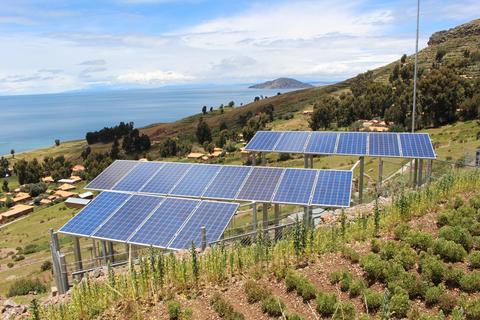Many of you might wonder, with all the sunshine we’re getting here in Brunei, why aren’t we going all solar?
The short answer is because in most cases here, it is simply not economically viable. Not even in the long run. You might think that your capital cost will be paid back eventually, but it will not. Here are the main reasons:
1. Cheap electricity
2. We are almost 100% connected to the grid
3. Absence of buy-back or feed-in-tariff scheme
These are also the very reasons why our company is focusing more on outdoor solar lightings and small solar power system.
1. Cheap electricity.
As we don’t really have a market for residential to commercial scale solar power system yet, we will use Sabah’s rate for reference here. Based on our survey there, one of the cheapest residential rate offered was RM33,500 for a 4.5 kWp solar power system which is equivalent to about B$11,166.67. Some systems even cost well above RM50,000++.
For a 4.5 kWp solar power system and with array yield of about 4 to 4.5 hours per day in Brunei, such system can produce approximately between 131,400 to 147,825 kWh of energy over their lifespan (4.5 kWp x 4 or 4.5 hours x 365 days x 20 years). As we have a block electricity tariff here in Brunei, I will take the average which is B$0.06 per kWh. Based on this, you will only save $7,884 to $8,869.50 worth of electricity over the lifespan of your solar power system. Compare this with your capital spending of RM33,500 (equivalent to B$11,166.67), you will be spending more than you can save! And mind you, these figures are based on Sabah’s on-grid systems, which means that battery cost has not been accounted for. With the absence of feed in tariff, we need to include batteries in the picture which will bring the overall system cost to almost twice of the on-grid system. And in Brunei, it will definitely cost more as we are not manufacturing or producing any of the components.
2. We are almost 100% connected to the grid.
The only case where solar is economically viable here in Brunei is if you are not connected to the grid. This means that you are far away from the nearest substation or only need a temporary source of electricity that cabling works will cost more than an off-grid solar power system such as in the case of construction sites, fish farms, vegetation farms, paddy field, off shore oil and gas platforms and rural residential areas (ulu).
Fortunately for us, only less than 1% of the population in Brunei has no access to electricity comprising mainly of people living in the rural areas. At present, majority of them are living on either solar or diesel/gasoline generators as their power source. Due to the high capital cost of solar, majority still prefers diesel/gasoline generators. Although diesel/gasoline generators will cost more than solar in the long run (as they need to buy diesel/fuel every month), at least they can adjust their usage accordingly to their budget.

3. Absence of buy-back or feed-in-tariff (FiT) scheme.
There are generally two ways to utilise solar energy for home owners. First is by consuming the electrical generation for your own use and the second is to pump it back into the grid, i.e., to sell it to your electricity provider or in Brunei’s context, to the government.
The second option can be very lucrative as power from renewables are often priced higher than the conventional generation. This however, is dependent on the country’s renewable energy policy. In many countries, Feed in Tariff (FiT) scheme has been implemented to increase renewable energy penetration. Under FiT, home owners can sell power generated from the solar power system installed on their roof top at a pre-agreed price for a pre-agreed period, typically 15 to 25 years. This is akin to owning a power station right on your roof top!
For example in Malaysia, with an FiT of about RM0.80 per kWh for 21 years (as of this writing), a typical 4.5kWp installation in Malaysia (capital cost RM33,500) will generate a total revenue of about RM110,376 to RM124,173. Meaning, these solar power system owners will get their money back in only about 6 years! The remaining 15 years will be pure profit!
As we do not have this yet in Brunei, there is no way we can earn or even get our money back from installing roof top solar.
So, in Brunei right now, the real saving for solar is just in the installation/cabling cost. This is why our company is mainly focusing on outdoor solar powered lightings and small solar power systems. Cabling and trenching works can cost up to thousands of dollars, hence for these small systems and outdoor lightings, solar is the cheaper and more convenient option.
But once our government implements the FiT scheme or when solar energy cost dropped lower than our electricity cost, we’ll be here ready for you!
If you need help to determine whether solar is for you or if you want to understand more about solar energy, please do not hesitate to contact us.

